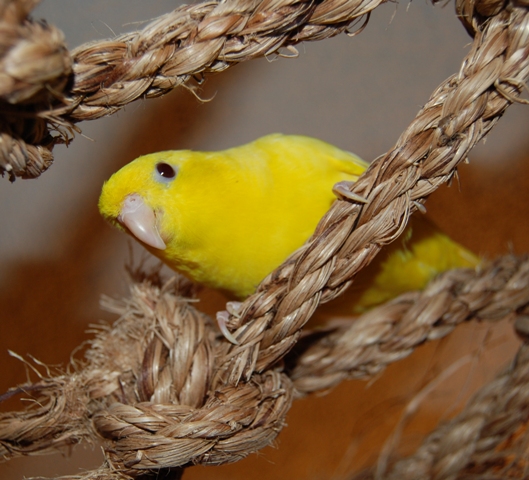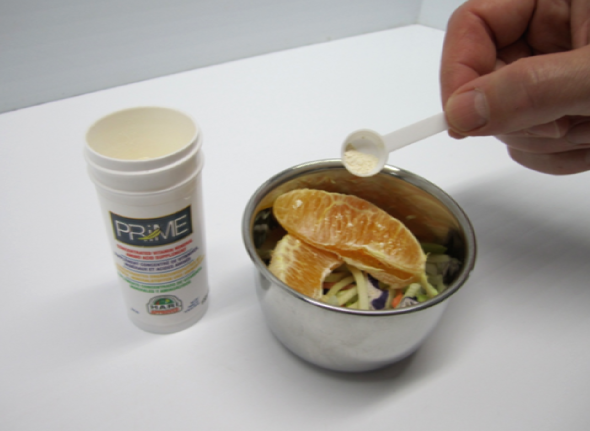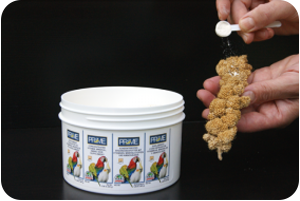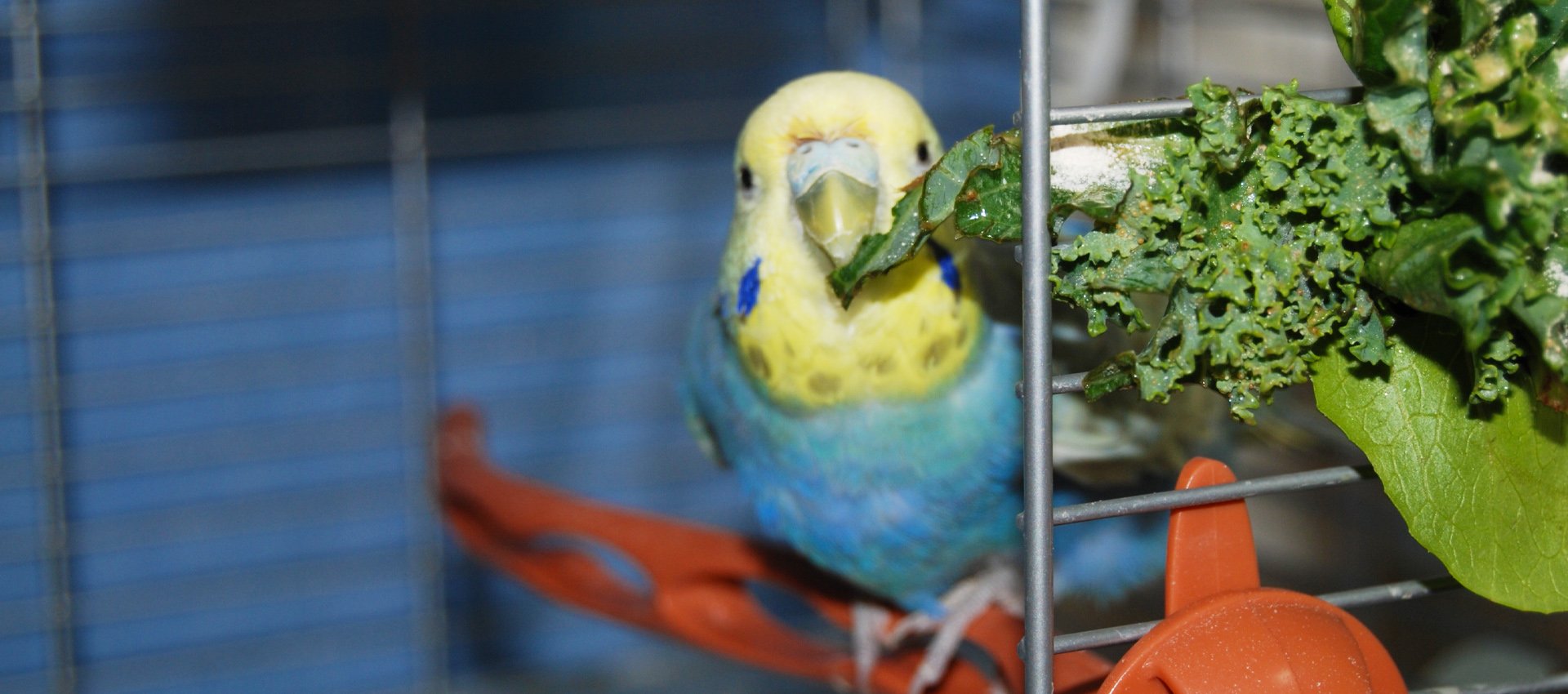Your cart is currently empty!

HARI Official Brand Site

The Hagen customer service department has been experiencing an increase of questions from avian caretakers on the use of one of our HARI Approved products-Prime Vitamin, Mineral & Amino Acid Supplement. The HARI Team thought it would be a good idea to share some creative strategies for efficiently administering Prime Supplement. These strategies are applicable for all companion birds on a predominate seed diet, but those with the smaller species such as finches, cockatiels, and parakeets, might find some of the tips very encouraging!

First, the HARI Team wants remind avian caretakers that the decision to use a vitamin supplement begins with a health evaluation or assessment by a qualified avian health provider. In addition, other factors should play into this decision, such as species predisposition, as well as the percent of Tropican verses the percent of seed based diets consumed by the bird. If you have concerns, please contact us or consult your avian veterinarian.

As Prime was developed for companion birds on a predominately seed based diet, we’ve always recommended Prime be sprinkled on a bird’s moistened food for optimal nutritional benefit. The fruity flavor and aroma of Prime homogenizes with fruits and vegetables and creates a nutritious morsel to complete the missing essential amino acids, vitamins, and minerals in traditional seed diets.
Often we hear of some birds that do not eat a lot of fruits and vegetables for one reason or another. We’d like to recommend some creative suggestions in giving your bird exactly what he needs!
Who doesn’t love searching for yummy mealworms? Finches, canaries, and even some of the smaller parrots really enjoy an occasional “crunchy on the outside and soft-n- squishy on the inside” bug. In fact, many passerines really benefit from a diet of bugs due to the protein. Not excited about live mealworms…that’s ok. Fortunately, canned mealworms make a great substitution!

Tip: Slightly moisten mealworms with spray bottle of fresh water. Put the mealworms in a small plastic bag, and dust them with a scoop of Prime…shake gently. Place the dusty critters in a shallow dish with assorted rocks or pebbles. Please be sure to use appropriate size pebbles to prevent bird accidently ingesting the rock! Place the loaded dish in flight or cage for an activity filled with foraging and nutritional enrichment your bird is sure to enjoy!
Add Some Exotic Fruit Flavor to Plain Old Spray Millet!
Spray millet offers the ultimate sprig of happiness for many companion birds. And, yes, even some macaws have been known to nibble on the millet sprays so this vehicle in administering Prime supplement is pretty universal for many companion birds!

Tip: Slightly moisten the Spray Millet with fresh water from a spray bottle. Dust the required amount of Prime Supplement on the millet so that the supplement sticks to the individual seed pods in the millet. The fruity flavor of Prime might make plain old millet a thing of the past!
Our feathered companions are really intelligent-that’s one of the benefits in sharing a life with a bird. However, getting a reluctant or stubborn bird to eat a nutritious diet often leaves the avian caretaker feeling helpless and well, quite frankly, outsmarted by the bird! Such is the case with a particular caretaker and a budgie that absolutely refused all attempts to eat fruits and veggies loaded with Prime. As it happened, this particular budgie’s cage was moved a little too close to a window with a cotton sheer one day. It didn’t take long for this little bird’s natural curiosity and tendency for shredding behavior to make mincemeat out of the curtain. Fortunately, this bird wasn’t harmed by the mischievous behavior, but the bird’s natural lure to shred the curtain inspired the caretaker to seize a new opportunity for nutritional supplement!

Tip: Wash some fresh Kale or Romaine lettuce leaves, slightly pat dry. Dust the required dosage of Prime Supplement on the leaves so that the supplement sticks. Take a bird safe clip, gather the leaves with Prime, and attach to OUTSIDE of bird’s cage with just a little of the leaves slightly sticking through the bars of the cage …yeah…so it looks as if he’s not supposed to have it. Avian caretakers are sure to have their “winning power” restored once they turn their backs and hear the crunching of the leaves!
Each package of Prime Supplement comes with dosage recommendation based on size of bird as well as instructions for the less preferred method of dosing in water dish. While Prime has a fruity aroma that blends well when applied to fresh fruits and veggies, the reaction when Prime is mixed in drinking water is entirely different. The high levels of calcium and essential amino acids do not dissolve in water very well and a few harmless particles may float or settle in the bird’s water dish. Plus the sulphur molecule from the amino acids will be released by the beneficial bacteria after 6 hours of being in a water solution. This may give off a medicinal odor that can deter some birds from drinking enough water to derive nutritional benefit. The water dish with fresh Prime solution will have to be changed frequently during the day-especially in warm climates. Not only does this add to the cost of supplementing a bird’s diet, this method may not be convenient for the caretaker.

If you’re feeding your bird a mixed diet of seeds, nuts, vegetables and fruits or a limited amount of pellets or if you have a chronic egg layer then your bird needs PRIME. PRIME adds 14 essential vitamins and 9 minerals missing in commercially prepared seed mixtures for companion birds.